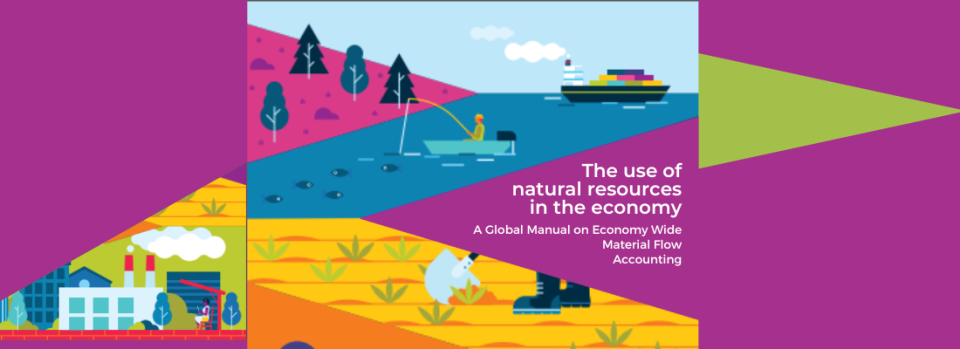Economy-wide Material Flow Accounts and the Sustainable Use of Natural Resources in the Economy

The global material footprint is growing rapidly, outpacing population and economic growth. Material footprint entails the volume of biomass, metals, non-metallic minerals and fossil fuels that we extract. Materials fuel our economies and underpin human development and well-being. The global extraction of these materials has more than tripled since 1970 and continues to grow at an accelerated rate. This growth is unsustainable.
Most of the growth occurred in upper-middle income countries, who reached a 56% global share of domestic material consumption in 2017. On a per capita basis, material footprint consumption levels in high-income countries are 60% higher than in upper-middle income countries and 13 times the level of low-income countries (International Resource Panel, Global Resources Outlook, 2019)
If we extract materials from the environment faster than they regenerate (biomass) or deplete our stores of materials (for fossil fuels and metals) then not only does this damage our natural environment but it leaves future generations without the foundation for feeding themselves, building shelter and sustaining life. Additionally, the more we use the more waste is created.
To manage risks posed by the accelerated use of materials in the global economy, many countries need reliable information about material use in their economies. They need information on how much and how these materials are used in the economy in order to develop circular approaches and to decouple economic growth from environmental degradation.
Economy-wide material flow accounts (EW-MFA) and indicators deliver a comprehensive overview of natural resource extraction, trade in natural resources, waste disposal and emissions. They measure environmental pressures of natural resource use. Compiling these accounts at global, regional and national levels enable better planning and decision making at different scales. Accounts of material flows are also needed to monitor progress on decoupling economic activity from material use.
On 8 July 2020, during the 15th Meeting of the United Nations Committee of Experts on Environmental-Economic Accounting, the UN Environment Programme (UNEP), Eurostat, the International Resource Panel (IRP) and the UN Statistics Division introduced a global manual on economy-wide material flows accounting (EW-MFA Manual). The publication entitled “The use of natural resources in the economy: A Global Manual on Economy Wide Material Flow Accounting” is a practical guidance tool that addresses specific issues related to resource extraction-based economies. The final document will be issued in a later date.
The Manual is fully consistent with the System of Environmental-Economic Accounting - Central Framework and constitutes an important step towards establishing a global standard for EW-MFA. It builds on the European MFA guidelines, and provides a modular approach for countries looking to develop EW-MFA for the first time.
The UNEP IRP MFA Database is used as a basis in the Manual. It was developed by the IRP based on a global model implemented by CSIRO for the SDGs. The database underpins the work of the Panel and its insights and recommendations on the sustainable management of natural resources. It also forms the basis for much of UNEP´s SCP Hotspots Analysis Tool.
UNEP and the IRP will play an active role in aiding countries to better understand, apply, and improve this important accounting approach at the national level. This will raise policy-makers’ awareness, and ability to make use of material flow analysis data and indicators in designing, implementing and evaluating sustainable consumption and production policies and targets. Global datasets would also benefit from an increased availability of information at national level.
